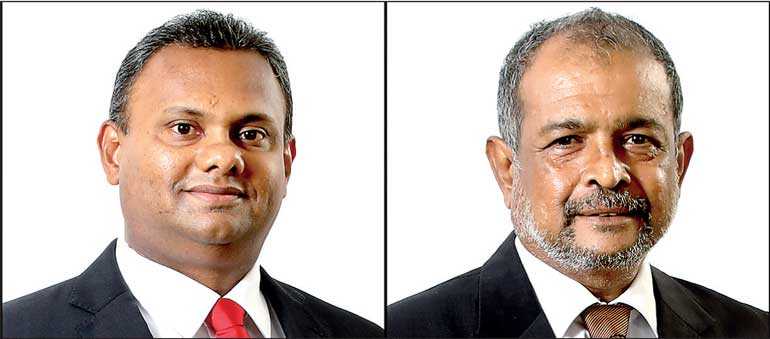Thursday Apr 03, 2025
Thursday Apr 03, 2025
Tuesday, 5 November 2019 00:00 - - {{hitsCtrl.values.hits}}

Pan Asia Banking Corporation PLC demonstrated a robust performance amidst challenging macroeconomic conditions and reported a strong operating profit before all taxes of Rs. 780.67 million for Q3 with a growth of 36%.
Meanwhile for the quarter ended in 30 September 2019, the bank reported post tax profit of Rs. 269.9 million, up 4% from the same period last year, despite higher taxes including debt repayment levy. The earnings per share for the quarter rose to 61 cents from 59 cents a share in comparative period.
The results is a testament to how the bank has been steadily gaining momentum in the growth in its lending portfolio in the third quarter after it reported a de-growth during the first half of the year.
Pan Asia Bank’s Return on Equity and Return on Assets remain among the highest in the industry with 11.60 percent and 1.10 percent respectively by the end of September 2019.
Sri Lankan banking sector earnings slowed during 2019 due to higher non-performing loans resulting from higher interest rates which hitherto prevailed and the weak economic condition, slowing down the overall growth in the sector assets.
“Pan Asia Bank too had its fair share of the sector weaknesses but yet again emerged unscathed during the most recent quarter with higher earnings and setting stage for growth,” said Pan Asia Bank’s Director/CEO Nimal Tillekeratne.
“As most of our challenges are now behind us, I believe the prevailing low interest rates and the expected policy and political stability would provide the much needed tailwind for the industry to march ahead with much vigour,” Tillekeratne added.
The bank grew its loans and advances book by over Rs. 3 billion during Q3, recouping the contraction witnessed during the first half of the year.
Meanwhile, the bank managed to maintain its net interest margin at 4.06% by September end which is considered to be commendable given the pressure on the margins due to deteriorating industry credit quality and the impact of moratorium to tourism sector.
The bank also managed to control the provisions made for possible bad debts during first nine months, particularly individual impairment charges falling to Rs. 508.26 million from Rs. 746.13 million during the same period a year ago. Individual impairment charges for the quarter decreased by 73% compared to previous quarter due to close monitoring overdue credit portfolios and improvement of underwriting standards. However, collective impairment charges for the period increased mainly due to the impact of new financial reporting standard (SLFRS 9).
There was a steeper increase in the taxes and levies in 2019 of as much as 51% which include the debt repayment levy which undermined the bottom-line for a certain extent.
The bank maintains all capital and liquidity ratios meeting the regulatory requirements as at 30 September and remains geared to continue the momentum during the remainder of the year taking advantage of the low interest rates and the improving sentiments after the elections.
Discover Kapruka, the leading online shopping platform in Sri Lanka, where you can conveniently send Gifts and Flowers to your loved ones for any event including Valentine ’s Day. Explore a wide range of popular Shopping Categories on Kapruka, including Toys, Groceries, Electronics, Birthday Cakes, Fruits, Chocolates, Flower Bouquets, Clothing, Watches, Lingerie, Gift Sets and Jewellery. Also if you’re interested in selling with Kapruka, Partner Central by Kapruka is the best solution to start with. Moreover, through Kapruka Global Shop, you can also enjoy the convenience of purchasing products from renowned platforms like Amazon and eBay and have them delivered to Sri Lanka.
Discover Kapruka, the leading online shopping platform in Sri Lanka, where you can conveniently send Gifts and Flowers to your loved ones for any event including Valentine ’s Day. Explore a wide range of popular Shopping Categories on Kapruka, including Toys, Groceries, Electronics, Birthday Cakes, Fruits, Chocolates, Flower Bouquets, Clothing, Watches, Lingerie, Gift Sets and Jewellery. Also if you’re interested in selling with Kapruka, Partner Central by Kapruka is the best solution to start with. Moreover, through Kapruka Global Shop, you can also enjoy the convenience of purchasing products from renowned platforms like Amazon and eBay and have them delivered to Sri Lanka.